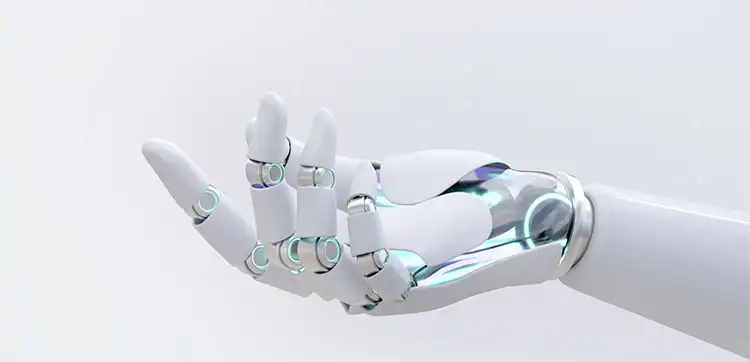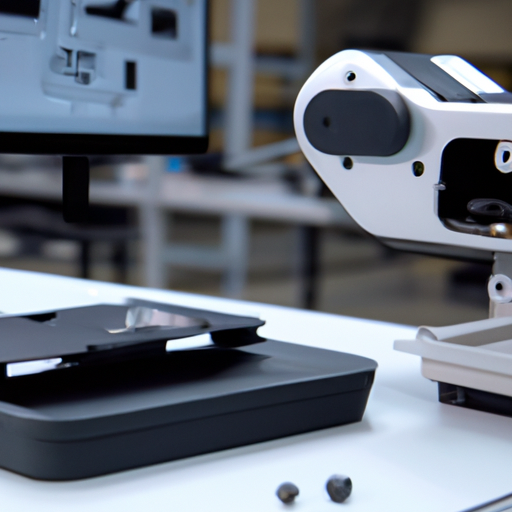
In today’s rapidly evolving technological landscape, businesses are constantly seeking innovative solutions to enhance their operational efficiency and drive growth. Embracing AI, IoT, and automation has emerged as a game-changing strategy for achieving these goals. By harnessing the power of artificial intelligence, the Internet of Things, and automation, companies can streamline their processes, improve productivity, and unlock unprecedented opportunities for success.
AI, or artificial intelligence, refers to the simulation of human intelligence in machines that are programmed to learn and perform tasks with minimal human intervention. By leveraging AI technologies, businesses can automate repetitive tasks, analyze vast amounts of data, and make data-driven decisions that drive efficiency and accuracy. The IoT, or Internet of Things, on the other hand, enables the interconnection of various devices and systems, allowing for seamless communication and data exchange. This interconnected network of devices offers businesses real-time insights, enabling them to optimize operations, improve customer experiences, and even create new revenue streams.
Automation, the third pillar in this transformative trifecta, involves the use of technology to perform tasks or processes with minimal human intervention. By automating routine tasks, companies can free up valuable time and resources, allowing employees to focus on more strategic and creative endeavors. This not only boosts efficiency but also promotes innovation and growth within organizations.
As businesses navigate the digital age, embracing AI, IoT, and automation has become imperative for staying competitive and thriving in the market. By harnessing these technologies, companies can enhance their operational efficiency, drive growth, and unlock new opportunities for success. So, let’s explore the exciting possibilities that lie ahead and discover how AI, IoT, and automation can revolutionize the way we do business.
Embracing AI, IoT, and Automation can revolutionize your business operations, leading to enhanced operational efficiency and growth. By harnessing the power of artificial intelligence, internet of things, and automation technologies, businesses can streamline processes, reduce manual errors, and optimize resource utilization. AI-powered analytics can provide valuable insights for making data-driven decisions, while IoT devices can enable real-time monitoring and control. Automation can automate repetitive tasks, freeing up valuable time for employees to focus on more strategic initiatives. Embracing these technologies empowers businesses to stay ahead in today’s competitive market.

Embracing AI, IoT, and Automation for Enhanced Operational Efficiency and Growth
In today’s fast-paced and technology-driven world, businesses are constantly seeking ways to improve operational efficiency and drive growth. One strategy that has gained significant attention and adoption is the embrace of artificial intelligence (AI), Internet of Things (IoT), and automation. These cutting-edge technologies have the potential to revolutionize how businesses operate, enabling them to streamline processes, make data-driven decisions, and enhance productivity. By leveraging AI, IoT, and automation, businesses can unlock new opportunities, improve customer experiences, and stay ahead in the competitive market.
The Power of AI in Operational Efficiency
Artificial intelligence has emerged as a game-changer in various industries, including manufacturing, healthcare, finance, and customer service. AI-powered systems have the ability to analyze large volumes of data, identify patterns, and make intelligent decisions without human intervention. This enables businesses to automate repetitive tasks, reduce errors, and improve overall efficiency.
One area where AI has made a significant impact is in predictive maintenance. By analyzing data from IoT sensors and equipment, AI algorithms can detect potential issues before they lead to breakdowns. This proactive approach to maintenance helps businesses avoid costly downtime and optimize the lifespan of their assets. AI can also be utilized in supply chain management, demand forecasting, and inventory optimization, allowing businesses to streamline operations and reduce costs.
Benefits of AI in Operational Efficiency
Implementing AI technologies can bring several benefits to businesses, including:
- Improved productivity: AI-powered automation can handle repetitive tasks, freeing up employees’ time to focus on more strategic and value-added activities.
- Enhanced accuracy: AI algorithms can process and analyze large amounts of data with precision, reducing the risk of errors and improving decision-making.
- Cost savings: By automating processes and optimizing operations, businesses can reduce costs associated with labor, maintenance, and inventory.
- Greater customer satisfaction: AI-powered chatbots and virtual assistants can provide instant and personalized support to customers, improving their overall experience.
The Role of IoT in Operational Efficiency
The Internet of Things (IoT) refers to the network of interconnected devices that can collect and exchange data. By connecting physical devices, sensors, and machines, businesses can gain real-time insights into their operations, monitor performance, and make data-driven decisions.
One example of IoT in action is in smart buildings. By integrating sensors and systems, businesses can optimize energy usage, monitor occupancy levels, and ensure the comfort and safety of occupants. IoT can also be applied in asset tracking and management, fleet monitoring, and supply chain logistics, enabling businesses to improve efficiency, reduce waste, and enhance sustainability.
Benefits of IoT in Operational Efficiency
Adopting IoT technologies can offer several advantages to businesses:
- Real-time visibility: IoT devices provide real-time data, allowing businesses to monitor operations, identify bottlenecks, and optimize processes on the fly.
- Proactive maintenance: IoT sensors can detect anomalies and trigger maintenance alerts, helping businesses address issues before they escalate and cause disruptions.
- Improved resource management: By tracking and analyzing data from IoT devices, businesses can optimize resource allocation, reduce waste, and improve sustainability.
- Enhanced safety and security: IoT-enabled surveillance systems and access control mechanisms can help businesses ensure the safety of their assets, employees, and customers.
Automation: Streamlining Processes for Growth

Automation involves the use of technology to perform tasks and processes with minimal human intervention. By automating repetitive and time-consuming tasks, businesses can improve efficiency, accuracy, and scalability.
One area where automation has proven to be highly effective is in customer service. Chatbots and virtual assistants powered by AI can handle customer inquiries, provide support, and even complete transactions. This not only improves response times but also frees up human agents to focus on more complex issues and build stronger customer relationships.
Benefits of Automation for Growth
The adoption of automation can fuel growth and success for businesses:
- Increased productivity: Automation reduces the time and effort required to complete tasks, allowing employees to focus on high-value activities that drive growth.
- Scalability: Automated processes can easily scale as businesses grow, ensuring consistency and efficiency across operations.
- Improved customer experiences: Automation enables businesses to provide faster and more personalized customer service, enhancing satisfaction and loyalty.
- Cost savings: By automating tasks, businesses can reduce labor costs and minimize errors, leading to significant cost savings over time.
Exploring the Synergy: AI, IoT, and Automation
While AI, IoT, and automation offer individual benefits to businesses, their true power lies in their synergy. When combined, these technologies can create a highly efficient and intelligent ecosystem that drives operational excellence and growth.
For example, by integrating AI algorithms with IoT sensors, businesses can leverage real-time data to optimize processes, predict maintenance needs, and make informed decisions. Automation can then be applied to streamline these processes, reducing manual effort and ensuring consistent and accurate execution.
The combination of AI, IoT, and automation can also enable businesses to unlock new opportunities and revenue streams. For instance, by analyzing customer data collected through IoT devices, businesses can gain insights into customer preferences, behaviors, and needs. This information can then be used to personalize marketing campaigns, develop new products and services, and deliver exceptional customer experiences.
The Future of Operational Efficiency and Growth
As technology continues to advance and evolve, the potential for enhancing operational efficiency and driving growth through AI, IoT, and automation is limitless. Businesses that embrace these technologies and harness their power will be well-positioned to thrive in the digital age.
By leveraging AI, businesses can automate tasks, gain valuable insights from data, and make data-driven decisions. IoT enables businesses to connect devices, monitor operations in real-time, and optimize resource allocation. Automation streamlines processes, improves productivity, and enhances customer experiences.
In conclusion, the integration of AI, IoT, and automation is revolutionizing how businesses operate and thrive. Embracing these technologies is no longer an option but a necessity for those seeking to stay competitive in a rapidly changing world. Through the synergy of these technologies, businesses can achieve enhanced operational efficiency, drive growth, and deliver exceptional value to their customers.
Key Takeaways: Embracing AI, IoT, and Automation for Enhanced Operational Efficiency and Growth
- Artificial Intelligence (AI) can help businesses automate repetitive tasks, improve decision-making, and enhance operational efficiency.
- The Internet of Things (IoT) enables the connection and communication between devices, leading to better data collection and analysis for improved business processes.
- Automation technologies streamline workflows, reduce errors, and save time, allowing businesses to focus on strategic initiatives and achieve growth.
- Embracing AI, IoT, and automation can lead to cost savings, increased productivity, and competitive advantage in today’s fast-paced business landscape.
- Businesses should invest in training and upskilling employees to adapt to the changing technological landscape and fully leverage AI, IoT, and automation for long-term success.
Frequently Asked Questions:
How can AI improve operational efficiency in a business?
AI, or Artificial Intelligence, has the potential to revolutionize operational efficiency in businesses. By leveraging AI technologies, businesses can automate repetitive tasks, analyze large amounts of data, and make intelligent decisions in real-time. This not only saves time and resources but also reduces the margin of error. AI-powered systems can optimize various aspects of a business, from supply chain management to customer service, leading to enhanced productivity and profitability.
One way AI improves operational efficiency is through predictive analytics. By analyzing historical data, AI algorithms can identify patterns and trends, enabling businesses to predict future outcomes and make informed decisions. This can help optimize inventory management, production schedules, and sales forecasting, ensuring that resources are allocated efficiently.
Furthermore, AI can automate routine tasks, freeing up employees to focus on more strategic and creative work. Chatbots powered by AI can handle customer inquiries, reducing the need for human intervention. AI can also streamline document processing, data entry, and other administrative tasks. By automating these processes, businesses can improve efficiency, accuracy, and overall productivity.
How does IoT contribute to operational efficiency?
The Internet of Things (IoT) plays a significant role in enhancing operational efficiency in businesses. IoT refers to the network of interconnected devices that can collect and exchange data. By connecting various devices and sensors, businesses can gather real-time information about their operations, enabling them to make data-driven decisions and optimize their processes.
One way IoT contributes to operational efficiency is through remote monitoring and control. With IoT-enabled sensors, businesses can monitor equipment, machinery, and infrastructure from anywhere. This allows for predictive maintenance, as anomalies and potential issues can be detected early on, preventing costly breakdowns and downtime.
IoT also enables businesses to track and manage their assets more effectively. By attaching sensors to inventory, equipment, and vehicles, businesses can gain visibility into their location, condition, and usage patterns. This helps optimize inventory management, reduce loss, and improve asset utilization.
Additionally, IoT facilitates efficient supply chain management. By tracking shipments, monitoring warehouse conditions, and optimizing routes, businesses can streamline their logistics processes, reduce costs, and improve customer satisfaction. Overall, IoT empowers businesses with real-time data and insights, enabling them to make better-informed decisions and enhance operational efficiency.
What are the benefits of automation in business operations?
Automation offers numerous benefits for businesses seeking to enhance operational efficiency. By automating repetitive and mundane tasks, businesses can reduce human error, improve productivity, and allocate resources more effectively. Here are some key benefits of automation in business operations:
1. Time and cost savings: Automation eliminates the need for manual intervention in routine tasks, enabling employees to focus on higher-value activities. This saves time and reduces labor costs, leading to increased efficiency and productivity.
2. Improved accuracy and consistency: Automated systems perform tasks with high precision and consistency, minimizing errors. This is especially valuable in areas such as data entry, where accuracy is crucial. By reducing errors, businesses can enhance the quality of their products or services and build customer trust.
3. Enhanced scalability: Automation allows businesses to scale their operations without the need for significant additional resources. Automated systems can handle increased volumes of work, ensuring smooth and efficient processes even during periods of growth.
4. Real-time insights and analytics: Automated systems generate valuable data that can be analyzed in real-time. This provides businesses with insights into their operations, enabling them to identify bottlenecks, optimize processes, and make data-driven decisions for improved efficiency and growth.
5. Competitive advantage: By embracing automation, businesses can gain a competitive edge. Automated processes allow for faster response times, improved customer service, and increased agility in an ever-evolving marketplace. This positions businesses for growth and success in the long run.

How can businesses integrate AI, IoT, and automation effectively?
Integrating AI, IoT, and automation effectively requires careful planning and strategic implementation. Here are some steps businesses can follow to ensure a successful integration:
1. Identify pain points: Assess your business operations and identify areas where AI, IoT, or automation can bring the most significant improvements. Look for tasks that are repetitive, time-consuming, or prone to errors. These are the areas where technology can make the most impact.
2. Set clear goals: Define specific goals and objectives for integrating AI, IoT, and automation. Determine the outcomes you want to achieve, such as improved operational efficiency, cost savings, or enhanced customer experience. Clear goals will guide your implementation strategy and help measure success.
3. Invest in the right technologies: Conduct thorough research to identify the AI, IoT, and automation technologies that align with your business needs and goals. Consider factors such as scalability, compatibility with existing systems, and ease of implementation. Choose technologies that offer robust features and reliable support.
4. Develop a roadmap: Create a roadmap that outlines the implementation process, including timelines, resource allocation, and milestones. Break down the integration into manageable phases to ensure a smooth transition and minimize disruption to ongoing operations.
5. Train and engage employees: Provide comprehensive training to employees to ensure they understand the benefits and functionalities of the integrated technologies. Encourage their active participation and engagement throughout the process. Employees are key stakeholders in the integration, and their support is crucial for its success.
6. Monitor and evaluate: Continuously monitor the performance of the integrated technologies and collect feedback from employees and customers. Regularly assess the impact on operational efficiency and make adjustments as needed. This iterative approach will help refine the integration and maximize its benefits.
What are the potential challenges in embracing AI, IoT, and automation?
While embracing AI, IoT, and automation can bring significant benefits, businesses may encounter certain challenges during the integration process. It is essential to be aware of these challenges and address them proactively. Here are some potential challenges:
1. Cost of implementation: Implementing AI, IoT, and automation technologies may require a significant upfront investment. Businesses need to carefully evaluate the costs and benefits and ensure that the long-term gains outweigh the initial expenses.
2. Data security and privacy: With increased connectivity and data exchange, businesses must prioritize data security and privacy. Adequate measures should be in place to protect sensitive information, prevent unauthorized access, and comply with relevant regulations.
3. Integration complexity: Integrating multiple technologies can be complex, especially if existing systems and processes need to be modified or replaced. It is crucial to plan and execute the integration carefully to avoid disruptions and ensure a seamless transition.
4. Workforce adaptation: Introducing AI, IoT, and automation may require employees to acquire new skills or adapt to new ways of working. Businesses should provide comprehensive training and support to help employees embrace the changes and leverage the technologies effectively.
5. Ethical considerations: AI and automation raise ethical concerns, such as job displacement and bias in decision-making algorithms. Businesses must address these concerns transparently and ensure that the technologies are used responsibly and ethically.
By acknowledging and addressing these challenges, businesses can navigate the integration process successfully, harness the full potential of AI, IoT, and automation, and achieve enhanced operational efficiency and growth.

Final Summary: Embracing AI, IoT, and Automation for Enhanced Operational Efficiency and Growth
As we wrap up our exploration of embracing AI, IoT, and automation for enhanced operational efficiency and growth, it is clear that these technologies have immense potential to revolutionize industries and drive success. By harnessing the power of artificial intelligence, the Internet of Things, and automation, businesses can streamline their operations, optimize resource allocation, and unlock new opportunities for growth.
By adopting AI, businesses can leverage advanced algorithms and machine learning to gain valuable insights, automate mundane tasks, and make data-driven decisions. This not only improves efficiency but also enables companies to stay ahead of the competition in an increasingly digital landscape. Similarly, the integration of IoT allows for the seamless connection and coordination of devices, enabling real-time monitoring, predictive maintenance, and enhanced productivity. Additionally, automation plays a crucial role in reducing human error, increasing productivity, and freeing up valuable time for employees to focus on more strategic and creative endeavors.
In conclusion, embracing AI, IoT, and automation is no longer a luxury but a necessity for businesses seeking operational efficiency and sustained growth. These transformative technologies offer a myriad of benefits, from improved decision-making to optimized processes and enhanced productivity. By staying ahead of the curve and harnessing the power of these innovations, businesses can unlock their full potential and thrive in the digital age. So, let us embrace the possibilities and embark on a journey of enhanced operational efficiency and growth through AI, IoT, and automation.


